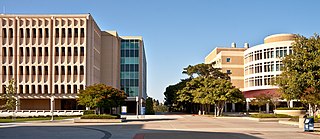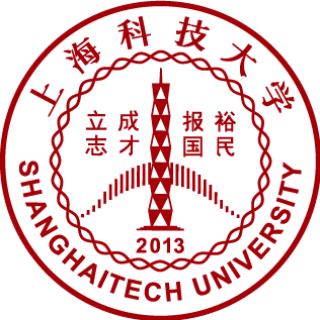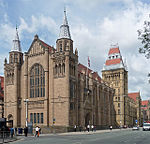Related Research Articles

The University of Manchester is a public research university in Manchester, England, formed in 2004 by the merger of the University of Manchester Institute of Science and Technology and the Victoria University of Manchester. The University of Manchester is a red brick university, a product of the civic university movement of the late 19th century.

The Technion – Israel Institute of Technology is a public research university in Haifa, Israel. Established in 1912 under the dominion of the Ottoman Empire, the Technion is the oldest university in the country.

The Norwegian Institute of Technology was a science institute in Trondheim, Norway. It was established in 1910, and existed as an independent technical university for 58 years, after which it was merged into the University of Trondheim as an independent college.

Lodz University of Technology (TUL) was created in 1945 and has developed into one of the biggest technical universities in Poland. Originally located in an old factory building, today covering nearly 200,000 sq. meters in over 70 separate buildings, the majority of them situated in the main University area. Almost 15,000 students are currently studying at the University. The educational and scientific tasks of the University are carried out by about 3,000 staff members.
The Cockrell School of Engineering is one of the eighteen colleges within the University of Texas at Austin. It has more than 8,000 students enrolled in eleven undergraduate and thirteen graduate programs. The college is ranked 10th in the world according to the Academic Ranking of World Universities, 11th nationally for undergraduate programs and 10th nationally for graduate programs by U.S. News & World Report. Nine of the ten undergraduate programs and seven of the eleven graduate programs are ranked in the top ten nationally. Annual research expenditures are over $180 million and the school has the fourth-largest number of faculty in the National Academy of Engineering.
The Engineering Campus is the colloquial name for the portions of campus surrounding the Bardeen Quadrangle and the Beckman Quadrangle at the College of Engineering at the University of Illinois at Urbana–Champaign. It is an area of approximately 30 square blocks, roughly bounded by Green Street on the south, Wright Street on the west, University Avenue on the north, and Gregory Street on the east.

The Faculty of Science is the largest of six faculties at McMaster University in Hamilton, Ontario, Canada. Founded in 1962, the faculty is located in the Westdale neighbourhood. It houses 6,800 undergraduate students and 600 graduate students, across 39 upper-year undergraduate programs ranging from astrophysics, biochemistry, earth and environmental sciences, to life sciences, human behaviour, kinesiology and medical and radiation sciences. Notable discoveries at McMaster University include the development of neutron spectroscopy by Bertram Brockhouse which earned him a Nobel Prize in Physics in 1994.

Khajeh Nasir Toosi University of Technology (KNTU), also known as K. N. Toosi University of Technology, is a public university in Tehran, Iran, named after medieval Persian scholar Khajeh Nasir Toosi. The university is considered one of the most prestigious, government-sponsored institutions of higher education in Iran. Acceptance to the university is highly competitive and entrance to all undergraduate and graduate programs requires scoring among the top 1% of students in the Iranian University Entrance Exam, also known as "Konkoor", which comes from a simile French word "concours", meaning competition.
The College of Science and Engineering (CSE) is one of the colleges of the University of Minnesota in Minneapolis, Minnesota. On July 1, 2010, the college was officially renamed from the Institute of Technology (IT). It was created in 1935 by bringing together the University’s programs in engineering, mining, architecture, and chemistry. Today, CSE contains 12 departments and 24 research centers that focus on engineering, the physical sciences, and mathematics.
Academics at the Massachusetts Institute of Technology are organized into 6 divisions containing 32 academic departments or faculties along with many interdisciplinary, affiliated, and intercollegiate research and degree programs. The Schools of Engineering, Science, Sloan School of Management, Humanities, Arts, and Social Sciences, Architecture and Urban Planning, and the Whitaker College of Health Sciences and Technology.

The School of Physical Sciences is an academic unit of the University of California, Irvine (UCI) that conducts academic research and teaching in the field of physical sciences. It offers both pre-professional training and general education in the departments of chemistry, earth system science, mathematics, and physics and astronomy. The school enrolls 1,400 undergraduate and graduate students and is one of the top schools in the nation in the number of degrees it confers in the area of physical sciences. It also offers specializations such as biochemistry, statistics, math for economics, applied and computational mathematics, astrophysics, applied physics, biomedical physics, and education. In 1995, the school gained international prominence when Frank Sherwood Rowland, a professor in chemistry and Frederick Reines, a professor in physics, won the Nobel Prize in their respective fields. It was the first time two people won the prize in the same year in two different fields at the same public university.

The College of Engineering (CoE) is one of the three undergraduate colleges at the University of California, Santa Barbara.
The Irwin and Joan Jacobs School of Engineering is an undergraduate and graduate-level engineering school offering BS, BA, MEng, MS, MAS and PhD degrees at the University of California, San Diego in San Diego, California. The Jacobs School of Engineering is the youngest engineering school of the nation's top ten, the largest by enrollment in the University of California system, as well as the largest engineering school on the West Coast and the ninth-largest in the country. More than thirty faculty have been named members of the National Academies. The current dean of the Jacobs School of Engineering is Albert P. Pisano.

ShanghaiTech University is a research university in Shanghai, China. Its campus is located in the Zhangjiang Hi-Tech Park in Pudong with an academic focus on STEM research. It has five schools and three research institutes and is backed by the Shanghai Municipal Government and Chinese Academy of Sciences. In 2018, it had 1433 undergraduates, 1788 Master's and PhD students, and 485 faculty members.

Emily Ann Carter is the Executive Vice Chancellor and Provost at UCLA and a distinguished professor of chemical and biomolecular engineering. She served from 2016 to 2019 as Princeton's dean of engineering and applied science, before returning to UCLA as EVCP in September 2019. Carter developed her academic career at UCLA from 1988 to 2004, where she helped launch two institutes: the Institute for Pure and Applied Mathematics and the California NanoSystems Institute. Carter is a theorist and computational scientist whose work combines quantum mechanics, solid-state physics, and applied mathematics.
References
- ↑ "Ordinances of The University of Manchester" (PDF). Retrieved 2008-09-14.
- ↑ "History of Faculty of Engineering and Physical Sciences". Archived from the original on 2008-09-25. Retrieved 2008-09-14.
- ↑ Elizabeth II. "The Charter of The University of Manchester" (PDF). Retrieved 2008-09-14.
- ↑ "John Perkins Faculty of Engineering and Physical Sciences". Archived from the original on 2008-04-10. Retrieved 2008-09-14.
- ↑ "New Dean for EPS" . Retrieved 2009-12-10.
- ↑ "Masdar Institute" . Retrieved 2009-12-10.[ dead link ]
- ↑ "Nobel Prize winners amongst our former and current staff and students". Archived from the original on 11 August 2013. Retrieved 24 September 2012.
- ↑ "BP Pledges $100 Million to UK-Led Universities to Create Industry-Changing Materials". Archived from the original on August 15, 2012. Retrieved 24 September 2012.
